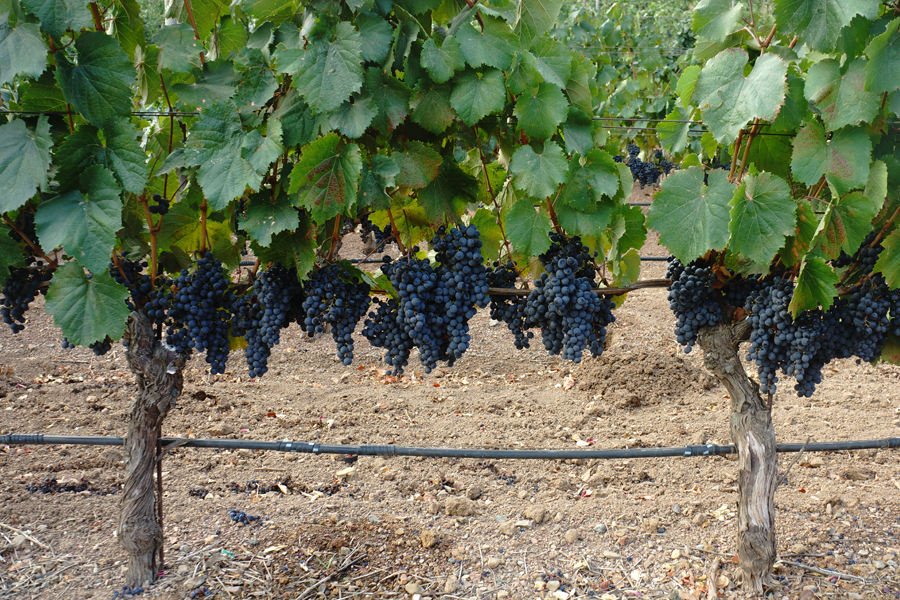Vineyard Update
We’ve had a dry year here in wine country, in fact, it’s really been a drought. As a consequence, our farming in 2020 has focused on making sure the vines have had enough water to support the grapes. I suspected this might be the case early in the year due to the fact that we usually see a little sap flow when we prune in the winter: this year that wasn’t the case. We wanted to mitigate the lack of moisture by irrigating in February to make sure the crops had enough water for budbreak, and this certainly helped.
Continued dry weather through the spring produced canopies that were smaller than usual. Normally we hedge our vine canopies two or three times to keep green growth in check; we want to be sure the grape clusters get enough light and airflow around them. This year, because of the smaller canopies, we only hedged once. We also mowed and tilled the permanent cover crops we have in some of our vineyards. These crops compete with vines for moisture. While this can be beneficial in a wet year when we need to control the amount of water getting to the grapes, in a dry year like this one, the cover crops don’t leave enough for the vines.
The dry year coupled with a hot summer resulted in somewhat lower yields; the clusters and the berries themselves were a little smaller than usual. The good news is that small berries tend to be very concentrated and intense so I anticipate very high quality in this year’s crop. It may be counterintuitive, but drought years can end up producing fine vintages as long as one pays attention. I’m looking forward to the wines of 2020 and I think you will, too.
In past newsletters I’ve told you about our new plantings in the Rutherford Ridge Vineyard, two acres of Cabernet Sauvignon and two of Malbec. We harvested a little fruit from these vines in 2019, but this year we’re getting our first normal yields from these young vines. We’re also getting a small amount of fruit from new plantings in our Pine Ridge Estate Vineyard. Michael and his team will keep track of these new lots separately to see how they develop. After four years of coaxing these vines along, I can’t wait to see what they produce!

Gustavo Aviña
Viticulture Director

